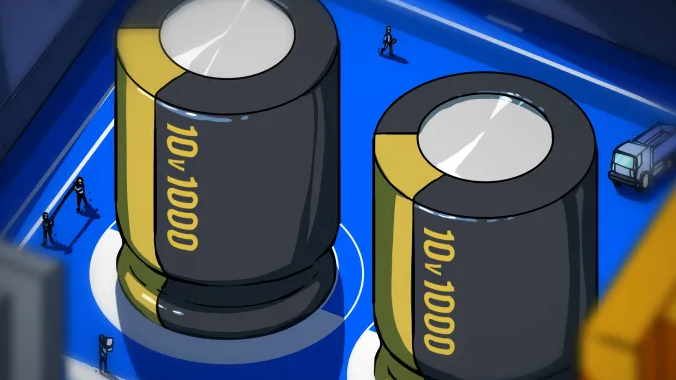Occasionally a design requires capacitors that are much closer to being identical in value to one another than the usual tolerance ranges afford. Precision matching of components from parts on hand might sound like a needle-in-a-haystack problem, but not with [Stephen Woodward]’s Capacitor Matchmaker design.

The Matchmaker is a small circuit intended to be attached to a DVM, with the output voltage indicating whether two capacitors (A and B) are precisely matched in value. If they are not equal, the voltage output indicates the degree of the mismatch as well as which is the larger of the two.
The core of the design is complementary excitation of the two capacitors (the CD4013B dual flip-flop achieves this) which results in a measurable signal if the two capacitors are different; nominally 50 mV per % of mismatch. Output polarity indicates which of the capacitors is the larger one. In the case of the two capacitors being equal, the charges cancel out.
Can’t precision-matched capacitors be purchased? Absolutely, but doing so is not always an option. As [Stephen] points out, selection of such components is limited and they come at an added cost. If one’s design requires extra-tight tolerances, requires capacitor values or types not easily available as precision pairs, or one’s budget simply doesn’t allow for the added cost, then the DIY approach makes a lot more sense.
If you’re going to go down this road, [Stephen] shares an extra time-saving tip: use insulated gloves to handle the capacitors being tested. Heating up a capacitor before testing it — even just from one’s fingers — can have a measurable effect.
[Stephen]’s got a knack for insightful electronic applications. Check out his PWMPot, a simple DIY circuit that can be an awfully good stand-in for a digital potentiometer.
















There used to be a lot of DIY hobbyist test gear in the past which used a DMM as the front end. Its like I totally forgot about them!
Very cool!
This won’t be news for most people reading this – I’m just mentioning it for those who are new to electronics or whose experience may be primarily on the digital side. The fact that the capacitors match when you build your project doesn’t mean they’ll be matched in even a week’s time. Choose your capacitors carefully, avoid electrolytic types if at all possible, and consider pre-aging them via voltage and thermal cycling before matching them.
Usually the best idea is to design circuits that don’t need pairs of exactly matched capacitors, just because two capacitors give the same performance to a test instrument doesn’t mean they’ll stay the same if subjected to different temperatures (even if both are at the same temperature their microfarads-vs-kelvin curves might not be, hence they would only be identical at the temp they were tested at), or each having different electrical signals applied across them. If you’re matching up NP0/C0G ceramic capacitors this might be useful, but for X5R, let alone electrolytics, the results of this test might give false reassurances. It’s a clever test circuit, and could well be useful somewhere, but the idea of coming up with circuit designs which don’t need a perfect match in the first place goes right back to Horowitz and Hill’s Art of Electronics book.
Does temperature matter? Do you need to try this at a range of temperatures that you expect your project to be subjected to? Or does the effect tend to be the same on two caps so when they are matched at one temperature they drift the same and so are matched at another?
I built such a device back in the late 80s. It was a pair of very simple capacitor meters, with an analog voltage along with a comparator to light an LED under each display that indicated the larger of the two cap values (it helped speed up things if sorting a large number of caps) I can’t find any of my notes on the project though.